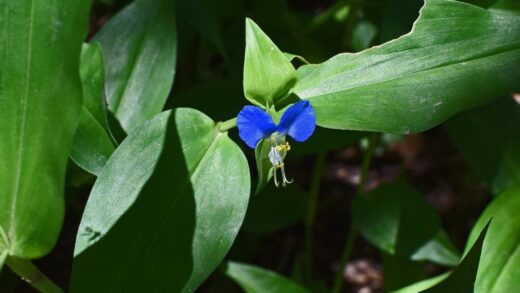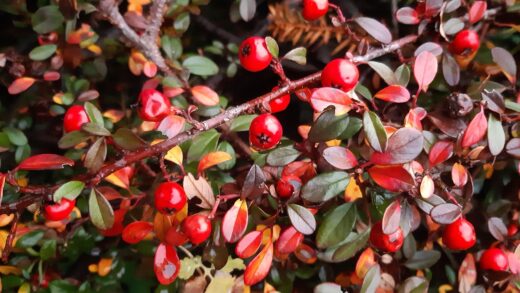Ensuring the survival of your common mallow through the winter months is a crucial aspect of its care, particularly for those gardening in colder climates. While this plant is inherently hardy, a few preparatory steps in the autumn can make a significant difference in its ability to withstand freezing temperatures and emerge vigorous and healthy in the spring. A successful overwintering strategy is not complex but relies on a proper understanding of the plant’s natural dormancy cycle and providing the right kind of protection at the right time. This guide will provide expert advice on how to prepare your common mallow for the cold, from end-of-season cleanup to effective mulching techniques, ensuring it returns as a beautiful feature in your garden year after year.
The common mallow’s ability to survive winter is largely dependent on its life cycle and the climate in which it is grown. In milder regions, it often behaves as a short-lived perennial, with the rootstock surviving the winter to send up new growth in the spring. In colder climates, it may act more like a biennial, completing its life cycle in two years and relying on self-sown seeds for its continuation. Understanding its likely behavior in your specific hardiness zone is the first step in formulating an appropriate winter care plan. Regardless of its life cycle, preparing the plant and the ground around it for the cold is always a beneficial practice.
The primary goal of any overwintering strategy is to protect the crown and the root system of the plant from the harshest winter conditions, particularly the damaging effects of repeated freezing and thawing cycles. It is not necessarily the cold itself that damages hardy plants, but the instability of the soil temperature. When the ground freezes, thaws, and refreezes, it can heave the plant’s crown right out of the soil, exposing the roots to desiccating winds and deadly cold. A good layer of insulating mulch is the key to preventing this destructive process.
It is also important to recognize that a healthy plant going into winter is far more likely to survive than one that is stressed, diseased, or weak. The care you provide throughout the entire growing season—proper watering, nutrition, and pest management—is, in effect, part of your overwintering strategy. A plant that has been able to store plenty of energy in its roots during the summer and autumn will have the resources it needs to endure the dormant period and push out strong new growth when the weather warms. Therefore, winter preparation truly begins long before the first frost.
Understanding the hardiness of common mallow
Common mallow is generally considered a very hardy plant, often capable of surviving in climates down to USDA hardiness zone 4, which corresponds to winter minimum temperatures of -34 to -29 degrees Celsius. This impressive cold tolerance is due to its ability to enter a state of dormancy, where its metabolic processes slow down significantly, and the plant focuses all its energy on keeping its root system and crown alive beneath the soil. The above-ground growth will die back completely after a hard frost, which is a natural and necessary part of its survival mechanism.
More articles on this topic
The plant’s hardiness is centered in its crown, which is the point at the base of the plant where the stems meet the roots. This area contains the dormant buds that will produce the following year’s growth. Protecting this vital part of the plant is the primary objective of any winter protection measures. The deep taproot also contributes to its resilience, as it is buried deep enough in the soil to be insulated from the most extreme surface temperature fluctuations. It is the combination of a protected crown and a deep root system that allows the mallow to endure harsh winters.
It is important to differentiate between hardiness and evergreen behavior. Common mallow is a herbaceous perennial or biennial, meaning that its top growth is not designed to survive the winter in cold climates. Gardeners should not be alarmed when the leaves and stems turn brown and die back after the first severe frosts; this is a perfectly normal and healthy process. Trying to protect the foliage is unnecessary and counterproductive, as this dead material can harbor pests and disease spores over the winter. The plant’s life force is safely stored below ground.
While the plant itself is hardy, very young plants or those that were planted late in the season may be more vulnerable. A plant needs sufficient time to establish a strong root system before the ground freezes. If you have planted your mallow in late summer or early autumn, it is especially important to provide it with winter protection in its first year. Once a plant has successfully overwintered and become fully established, it will be much more resilient and may not require the same level of protection in subsequent winters, except in the very coldest climates.
Preparing the plant for winter
The preparation of your common mallow for winter should begin in the late summer and early autumn, well before the first frosts are expected. One of the most important steps is to cease all fertilization by mid-summer. Applying fertilizer late in the season can encourage a flush of new, tender growth that will not have time to harden off before the cold weather arrives. This new growth is extremely susceptible to frost damage and can compromise the health of the entire plant. You want the plant to focus on maturing its existing growth and storing energy in its roots, not on producing new leaves.
More articles on this topic
As autumn progresses, you should also gradually reduce any supplemental watering. The plant’s water requirements naturally decrease as its growth slows down. Allowing the soil to become slightly drier helps to signal to the plant that it is time to begin entering dormancy. Overly wet soil in the autumn and winter is one of the biggest threats to hardy perennials, as it can lead to crown and root rot, a condition from which the plant is unlikely to recover. Of course, do not let the plant become completely desiccated, but avoid the heavy watering practices of the summer months.
The next critical step is the end-of-season cleanup, which should be done after the first hard frost has caused the top growth to die back completely. Using a clean, sharp pair of secateurs or shears, cut the dead stems and foliage of the common mallow right down to about 5 to 10 centimeters above the ground. Leaving a short stubble makes it easy to locate the plant in the spring and provides a small amount of protection for the crown. This “haircut” is vital for garden hygiene.
Removing the dead top growth is essential because it eliminates potential overwintering sites for pests and disease spores. Foliage that is left in place can decay over the winter, creating a damp mat that promotes fungal diseases like rust and provides a cozy shelter for slugs and other unwanted guests. By cutting the plant back and removing the debris from the garden, you are ensuring that the plant starts the next spring with a clean slate, significantly reducing the likelihood of disease problems early in the new season.
Mulching and protection techniques
Once the ground has begun to freeze, but before the coldest part of winter sets in, it is time to apply a protective layer of mulch. The timing of this step is important. If you apply the mulch too early, while the ground is still warm, it can trap moisture and heat, potentially leading to crown rot. It can also provide a comfortable winter home for rodents like voles, which may then gnaw on the plant’s crown. The goal of winter mulch is not to keep the ground warm, but to keep it frozen, insulating it from temperature fluctuations.
An ideal winter mulch is one that is light, airy, and does not compact into a dense, soggy mat. Good choices include shredded leaves, pine needles, straw, or chopped-up cornstalks. These materials will trap air, which is an excellent insulator, and will not hold excessive moisture. Apply a generous layer, about 10 to 15 centimeters deep, over the crown of the plant and the surrounding root zone. This insulating blanket will help to prevent the damaging freeze-thaw cycles that can heave the plant out of the ground.
In areas with reliable and continuous snow cover, the snow itself acts as an excellent natural mulch. A deep layer of snow provides fantastic insulation, keeping the soil temperature stable and protecting the plant crown from cold, drying winds. If you live in a region that gets consistent snow cover throughout the winter, you may find that less artificial mulch is needed. However, it is often wise to apply a layer of organic mulch anyway, as it provides protection during periods in early and late winter when the ground is frozen but there is no snow.
For gardeners in the very coldest zones or for those wanting to give extra protection to a particularly prized or young plant, additional measures can be taken. After applying the organic mulch, you can place evergreen boughs over the top. The boughs help to hold the mulch in place and are excellent at catching and holding snow, further increasing the insulating layer. Avoid using heavy, waterproof covers like plastic sheeting, as these can trap moisture and cause the plant to rot. The key is insulation, not suffocation.
Spring care after dormancy
As winter begins to recede and the signs of spring appear, it is important to manage the transition out of dormancy correctly. The timing for removing winter protection is crucial. If you remove the mulch too early, a late, hard frost could damage the newly emerging, tender shoots. If you leave it on for too long, the thick layer of mulch can inhibit new growth by blocking sunlight and keeping the soil too cold and wet. The best time to start removing the mulch is when you see the very first signs of new growth at the base of the plant.
Remove the winter mulch gradually over a period of a week or two. This allows the plant to slowly acclimatize to the increasing light levels and fluctuating spring temperatures. You can start by pulling the mulch back from the immediate crown of the plant, leaving it in place over the surrounding root zone. As the weather becomes more settled and the risk of a hard frost diminishes, you can rake the rest of the mulch away. This organic mulch can be added to your compost pile or used to dress the surface of your garden beds.
Once the mulch is removed and the new shoots are clearly visible, you can complete the final cleanup. Trim off any remaining dead stubs from the previous year’s growth, cutting them back as close to the crown as possible without damaging the new shoots. This is also an excellent time to apply a top-dressing of fresh compost around the base of the plant. This will provide a gentle boost of nutrients to support the vigorous flush of spring growth that is about to begin.
After the spring cleanup and feeding, resume your normal watering practices. As the plant begins to grow actively, it will require more moisture. Keep the soil evenly moist to support the developing leaves and stems. By providing this careful attention as the plant emerges from dormancy, you are setting the stage for a healthy and productive growing season, ensuring your successfully overwintered common mallow will once again grace your garden with its charming blooms.




















